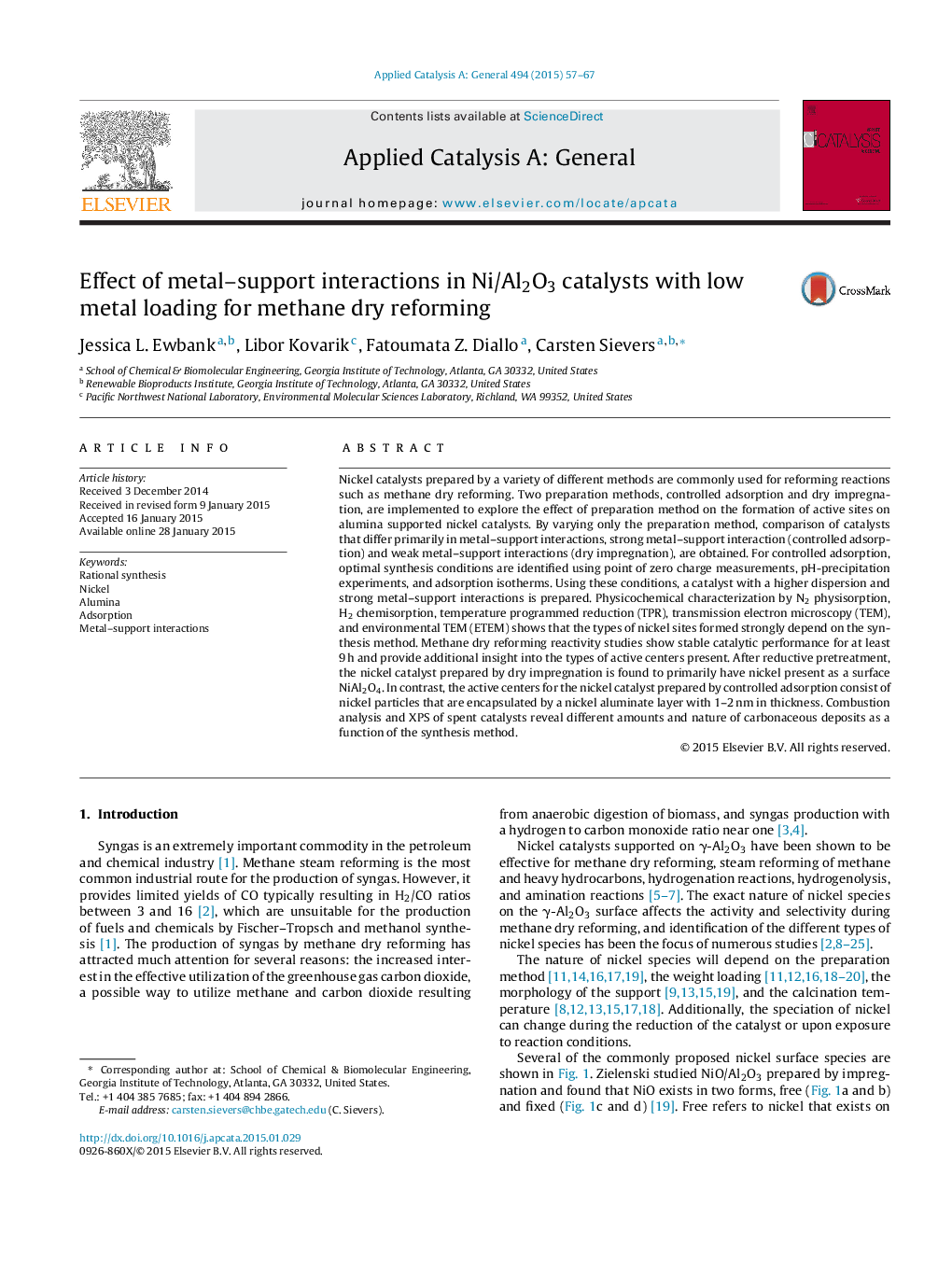| Article ID | Journal | Published Year | Pages | File Type |
|---|---|---|---|---|
| 39362 | Applied Catalysis A: General | 2015 | 11 Pages |
•Preparation method affects nickel speciation which affects activity and selectivity.•Dry impregnation preparation results in catalyst composed primarily of NiAl2O4.•Controlling adsorption of Ni2+ on Al2O3 can prevent NiAl2O4 formation at T < 600 °C.•2 wt% Ni/Al2O3 catalysts have excellent activity for methane dry reforming.•Quantity and type of carbonaceous deposits affected by nickel active site.
Nickel catalysts prepared by a variety of different methods are commonly used for reforming reactions such as methane dry reforming. Two preparation methods, controlled adsorption and dry impregnation, are implemented to explore the effect of preparation method on the formation of active sites on alumina supported nickel catalysts. By varying only the preparation method, comparison of catalysts that differ primarily in metal–support interactions, strong metal–support interaction (controlled adsorption) and weak metal–support interactions (dry impregnation), are obtained. For controlled adsorption, optimal synthesis conditions are identified using point of zero charge measurements, pH-precipitation experiments, and adsorption isotherms. Using these conditions, a catalyst with a higher dispersion and strong metal–support interactions is prepared. Physicochemical characterization by N2 physisorption, H2 chemisorption, temperature programmed reduction (TPR), transmission electron microscopy (TEM), and environmental TEM (ETEM) shows that the types of nickel sites formed strongly depend on the synthesis method. Methane dry reforming reactivity studies show stable catalytic performance for at least 9 h and provide additional insight into the types of active centers present. After reductive pretreatment, the nickel catalyst prepared by dry impregnation is found to primarily have nickel present as a surface NiAl2O4. In contrast, the active centers for the nickel catalyst prepared by controlled adsorption consist of nickel particles that are encapsulated by a nickel aluminate layer with 1–2 nm in thickness. Combustion analysis and XPS of spent catalysts reveal different amounts and nature of carbonaceous deposits as a function of the synthesis method.
Graphical abstractFigure optionsDownload full-size imageDownload high-quality image (92 K)Download as PowerPoint slide
